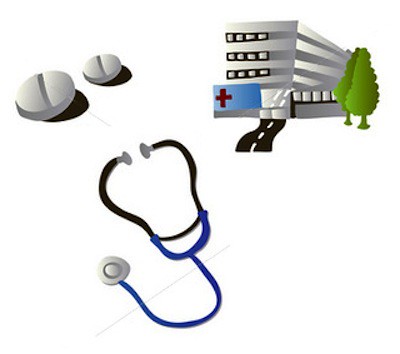
This blog post is part of a crash-course series about the state of the healthcare industry, and the vital information that every pharma marketer needs to know.
By Rob Kempton (@manonthemooncon)
Social media is no longer the future its here. Various stakeholders including patients, pharmaceutical companies, hospitals, medical practitioners and others are finding their voice in the online conversation, each bringing different values and perspectives to the discussion.
In our ever more connected world, social media has changed expectations in how people receive and share information. Business and personal reputation can be built or destroyed online and as each of these groups reach out to a larger community, they share heightened responsibility as they engage in online conversations.
Lets examine the roles and responsibilities of different stakeholder groups in the online conversation:
Patient: Todays patient is much more involved in his or her treatment and the stigma of sickness and disease has dissipated, as people are willing to discuss their ailments online, either in open forums like Facebook or in closed communities. For example, patients can register on the Patients Like Me website and take part in discussions about their disease and treatment in a secure setting, exchanging insight and personal experiences. These patients realize the value of sharing medical information and how it can help others cope with chronic illnesses such as lupus, cancer, sclerosis etc. The message is “youre not alone and there is a community who can help provide insight into treatments therapies and options.
Patients who are most active and offer recommendations often have implied credibility, and they may influence how other patients manage their care. While patients can share medical knowledge, their value is mostly in providing emotional support. People who are engaged in social media and comfortable advocating for their own care can be inspirational to those who may be more passive on the social networks and when in the doctors office.
Patient advocacy groups are also playing a larger role in how drug research is funded and developed as well as influencing how biotechnology and pharmaceutical companies set research priorities. Recognizing that the squeaky wheel gets the oil, they are elevating the voice of the patient to drive more patient-centered health care.
Hospitals: Hospitals are embracing social media to educate patients on health related topics, highlight staff, connect with their communities and expand the boundaries of communication. While some are simply monitoring conversations in the community, others are taking a thought leadership role and driving discussion.
Those that are generating content, whether thats YouTube videos to highlight a procedure, technique or patient experience or creating forums that allow patients with certain conditions to connect with and support one another, are differentiating themselves in the often-crowded retail health care space, both creating better customer experiences for patients and driving additional brand awareness of their services.
But if the potential for hospitals is great, then so is the responsibility. Patients and loved ones may be indiscriminate in their use of social media to seek out medical answers the facility that only checks its Twitter account once a week, for example, could find themselves accused wrongly or not of playing part in a tragedy if someone tweeted an emergency medical question and didnt receive a timely response.
Because patients may view hospitals as the voice of authority, its prudent to establish social media policies as well as disclaimers that distinguish opinion from fact. Whether communication is initiated by a physician, staff member or as a general message from the institution, activity that happens through social channels should not be commercially-biased and should be factually accurate.
However, good communication requires more than disseminating factual information. Social media also demands active listening. By listening to patients, medical professionals and the community, organizations can support best practices, provide information of value and create an open environment for feedback and engagement.
Medical practitioners: Online doctors may be the future of health care as more doctors are interacting with patients and other medical professionals through websites, blogs, and closed portals and on social networks. Recognizing that social media and participating in the online conversation is gaining traction among health care workers, the American Medical Association has issued a new policy to address professionalism in the use of social media.
Part of a physicians responsibility both on and offline includes respecting the boundaries of the doctor-patient relationship as well as adhering to standards of patient privacy. While physicians can help patients by sharing knowledge learned from their experiences with their entire patient population, they need to be particularly careful sharing this information online and ensure that any identifiable information is kept confidential. Because online conversations have a semblance of permanence, physicians need to be mindful of how and in what context they share information as well as monitor their online “brand and ensure content attributed to them or posted by them is accurate and appropriate.
The American Medical Association takes this one step further to say not only do doctors need to be mindful of their own online activity, but should they see a college acting unprofessional or in violation of the standards, they should bring it to the attention of the individual or report the infraction to the appropriate authorities. This approach benefits all professionals and helps to maintain public trust in the medical profession.
Social media will continue to play a prominent role in how patients gather information and interact with the medical community. Medical professionals need to uphold professionals standards while fostering new ways to connect, collaborate and communicate with the communities they serve. Working together, these different groups can effectively interact and contribute to better quality health care for all.
One Response to PHARMA 101: Roles and Responsibilities in the Online Conversation